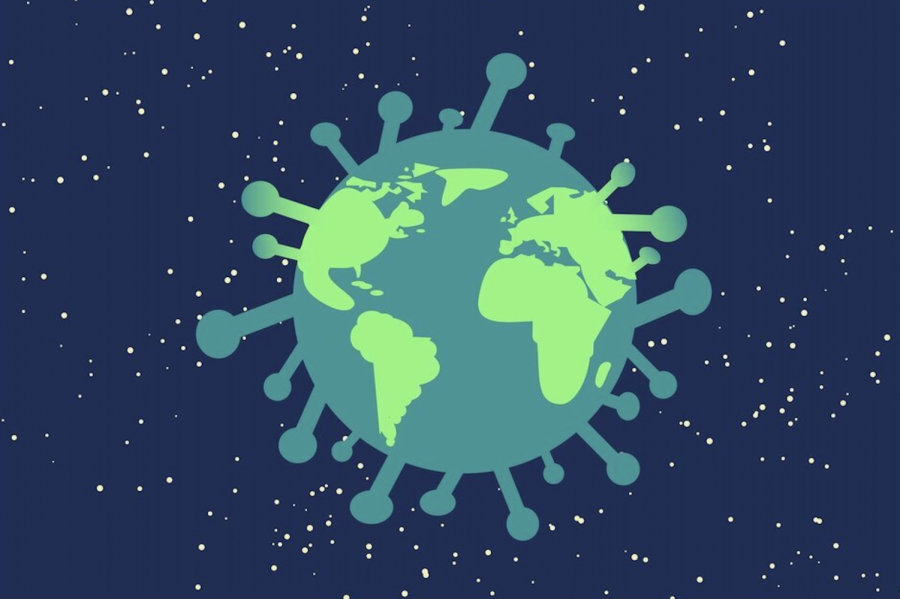What if COVID-19 exists forever?
Sep 12, 2021
From the bustling city of New York to the quiet savannahs in Africa, surveillance footage of animals roaming empty territories amidst COVID-19 lockdowns flooded social media outlets, including Tiktok, Instagram, and Facebook. Then came the grim changes to daily life no one was expecting: frequent temperature checks, strict social distancing, and mask mandates.
As the world came to an abrupt halt from COVID-19 lockdowns, both animals and humans felt the effect of the pandemic. With such drastic changes to daily life, many have doubted whether there will ever be an end to this pandemic. What if COVID-19 lasts forever?
The constant emergence of new variants has made it difficult to predict the future of COVID-19, but past pandemics may offer clues.
After the Great Influenza of the 1900s killed more than 50 million people, the virus eventually subsided through widespread immunization. The COVID-19 pandemic may experience something similar—infection rates will wane as most people gain immunity through vaccinations, but the virus might never go away.
First and foremost, COVID-19 is a highly contagious respiratory disease, making sudden outbreaks highly possible. As a result, frequent and regular COVID-19 vaccinations may be required similarly to the yearly flu shot. As evidenced by multiple breakthrough cases, vaccines are not entirely foolproof, which will require scientists to develop new ones annually.
Large gatherings for New Year’s, Chuseok, and school events in the future may take place with the majority vaccinated. People with underlying health conditions will need to take extra precautions.
For nations worldwide, the pandemic may continue to negatively impact their economies. Worse yet, developing countries are projected to take the longest to recover, according to the United Nations.
The continual circulation of COVID-19 could have long-term consequences for wildlife too. In cities, urban-dwelling animals, which rely on food waste for their diets, have struggled to survive amidst global lockdowns. In Africa, the pandemic has reduced law enforcement presence in the savannas, leaving critically endangered species, such as the black rhino, vulnerable to poaching.
If present trends continue, irreversible damage to endangered species may occur. The population of the black rhino will continue to decline, leading to changes in the trophic levels and adverse effects on other species. Massive efforts to bring the population back to stable levels will need to occur but could prove costly for less economically developed nations. Moreover, the continual use of disinfectants in open environments and the improper disposal of medical equipment may cause ecological challenges for species and increase environmental waste in the long run.
Fortunately, the aforementioned scenarios are only hypothetical, and hopefully, they remain so. Through immediate actions by governments and the international community, the world can avoid disastrous consequences.
Luckily, some nations are making progress to alleviate economic impacts. On Sept. 4, the South Korean Government announced plans to lift COVID-19 restrictions to the third level, a step in the right direction towards adopting a system known as “With Corona.” This policy, which intends to minimize further harm to the economy, eventually will allow citizens to return to daily activities and let businesses reopen once vaccination levels among adults exceed 80 percent.
Such progress, albeit small, is enough to make significant differences. The public must continue to take action before it becomes too late to ask, “What if COVID-19 exists forever?”







